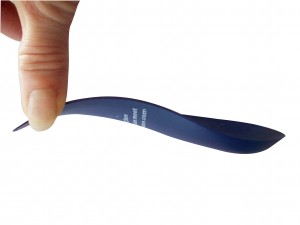 Most people know their foot has an arch. But, your foot actually has three arches – contrary to information found on the Internet from one major foot orthotic store.
Most people know their foot has an arch. But, your foot actually has three arches – contrary to information found on the Internet from one major foot orthotic store.
Your foot’s arches are formed by the tarsal and metatarsal bones, and are strengthened by the ligaments and tendons. The three arches of the foot are the:
- Medial Longitudinal Arch which runs along the inside of your foot from the ball of the foot to the heel. This arch is the largest, and the one most people recognize. This arch absorbs most of the impact when walking, running or jumping.
- Lateral Longitudinal Arch which runs along the outside of your foot from the ball of the foot to the heel – parallel to the medial longitudinal arch. This arch is most visible in people who have very high arches.
- Trans-metatarsal Arch, or Transverse Arch, which runs across the midfoot from the outside to the inside, posterior to the five metatarsophalangeal joints (the toe joints that connect the toes to the foot) in the ball of your foot. This is the only arch in the foot that you cannot see.
Just like the arches the Romans used over 2000 years to build their aqueducts, the arches of the feet help to support and redistribute weight – more specifically, your body’s weight when standing, providing strength and stability. Your foot’s arches also are essential during walking and running since they absorb the force of your body weight.
Within each arch of the foot, one bone forms the apex of the arch, holding it together.
- Talus in the medial longitudinal arch
- Cuboid in the lateral longitudinal arch
- Middle cuneiform in the transverse arch
These bones, along with the ligaments that hold the bones together, help to create a strong, stable foot structure. Additionally, your muscles and the plantar fascia (a band of tissue that runs from your heel bone across the bottom of your foot to your toes, connecting to the metatarsal joints) also provide support to your foot. When one or more of these structures are out of alignment, the foot’s strength and stability is in jeopardy. Foot pain and injury may then occur.
When your feet are out of alignment due to structural issues, overpronation (walking with your ankles tilted inward too much) or supination (walking with your ankles tilted outward too much) may result. When this happens, the joints in your knees, hips and lower back have to compensate for your feet’s poor positioning during walking, leading to decreased stability. Eventually, your knees, hips and lower back will begin to deteriorate, causing pain and possible injury.
Support Your Arches with ezWalker® Performance Insoles
 Custom orthotics, like the ezWalker® Performance Insole, are biomechanically designed to properly support the medial, lateral, and trans-metatarsal arches of your feet by redistributing your body weight evenly over both feet and bringing your whole body into correct alignment. Additionally, by supporting your arches, these custom insoles reduce the shock forces your feet experiences every day, providing you with pain relief and comfort for the entire body.
Custom orthotics, like the ezWalker® Performance Insole, are biomechanically designed to properly support the medial, lateral, and trans-metatarsal arches of your feet by redistributing your body weight evenly over both feet and bringing your whole body into correct alignment. Additionally, by supporting your arches, these custom insoles reduce the shock forces your feet experiences every day, providing you with pain relief and comfort for the entire body.
The WalkEzStore.com uses a unique, 7-step, biomechanical, non-weight-bearing, custom-impression process to create a functional orthotic that controls the hind foot and allows proper function of the first metatarsal joint – creating a better step with each step you take.
For more information on the ezWalker® Performance Insoles, visit our website. The ezWalker® is ultra thin and ¾ in length, so it can transfer easily from shoe to shoe. Plus, it can be worn with almost any type of footwear. So order your ezWalker® Performance Insoles today!
Remember … when your feet feel good, you feel good.

